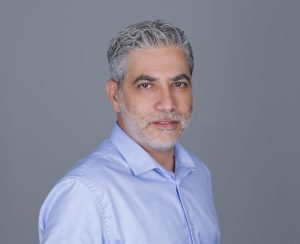“On my first week in Israel, I stood by the Western Wall… I stood just one step away from the Wall, from the stones, and I felt I didn’t belong. I felt rooted in another reality. I didn’t take a step forward. But someone tugged at my sleeve and asked me to join a minyan. I put on a kippah and joined. I said the Mincha prayer.
This is a Jewish thing– perhaps the most unique thing in Judaism– to be one in a minyan. To know that the nine need the tenth, and the tenth needs the nine. Perhaps that is the most meaningful thing in Judaism, and there’s nothing more essentially Jewish than that movement…”
(Abba Kovner)
Much has been written about kindness (chesed) in the Book of Ruth. But as I return to this biblical story in the early summer of 5785, during a time when kindness is needed more than ever, I choose to focus not only on the act of chesed, but on the space in which it unfolds: the space of community.
Midrashic interpretation of the opening verses of the Book of Ruth emphasizes not kindness, but its opposite– detachment from community.
“And a man went from Bethlehem in Judah to live in the fields of Moab.”
Why did he leave? He was a wealthy and respected man.
And yet, afraid that famine would bring the poor to his doorstep asking for help, he chose to flee– not just from hunger, but from responsibility. He distanced himself from the very community he belonged to, rather than carrying it on his shoulders.
In contrast to this retreat, a few verses later comes a powerful act of restoration– through his daughter-in-law, Ruth:
“Wherever you go, I will go. Wherever you lodge, I will lodge. Your people shall be my people, and your God my God.”
Ruth’s steadfast words to Naomi are perhaps the most meaningful expression of belonging in the entire book.
She insists on staying close, on traveling to Naomi’s land and adopting her people and her God. Through this act, Ruth expresses both a desire for belonging and the shaping of a new identity. It is through this commitment to connection that a new story begins to emerge.
From their return to the arms of the community, both Naomi and Ruth begin a personal journey of growth– one that soon extends to communal renewal, and eventually, to national restoration.
Even though Naomi at first tries to distance herself from the women of Bethlehem, saying,
“Do not call me Naomi [pleasant]; call me Mara [bitter],”
the community’s response is not rejection– but embrace.
In the fields where Ruth meets Boaz for the first time, we see an ideal communal reality: one where kindness is lived through agricultural laws of justice– leket, shikhecha, and ma’aser ani — the rights of the poor to collect gleanings and forgotten produce.
Boaz’s decision to offer Ruth safety and dignity, asking her to stay in his field and not in others is an expression of everyday kindness, rooted in a shared social contract.
And from that simple act of generosity, a new home is born.
Their child, Obed, was born at the end of the story and represents the final repair of his grandfather’s mistake.
He is born into the community:
“And the women said to Naomi, ‘Blessed be the Lord, who has not left you this day without a redeemer…’”
And in a communal act, the people give him his name.
Thus, a child born of love and kindness restores Naomi’s connection to society. After years of bitter exile, she finds herself once more– as a caregiver, a grandmother, a friend, and a partner in the collective nurturing of a child who will become part of the redemptive line of King David.
Sometimes, it takes a village to raise a child.
And sometimes, it takes one child to hold a village together.
But what is it about community that enables this kind of growth?
Belonging is a fundamental human need.
We need it to feel secure, to shape our identity, and to live with purpose.
When a person feels truly connected to their community — a connection reflected in shared responsibility, mutual empowerment, and acts of grace — they thrive. And as they grow, so does their environment.
It becomes a cycle of mutual nourishment: a flourishing community gives rise to flourishing individuals — and flourishing individuals strengthen the community in return.
May we all, in these days, be both influencers and influenced– contributing to our communities’ well-being while being nourished by their growth.
Today, throughout the Atid school network, we are integrating a shared “Language of Meaning”– an educational framework that sees the connection between individual and community as a core value.
This approach centers on the model:
“An empowered individual strengthens the community, and a strong community empowers the individual.”
You’re invited to learn more about this approach on the Atid Educational Network website.



